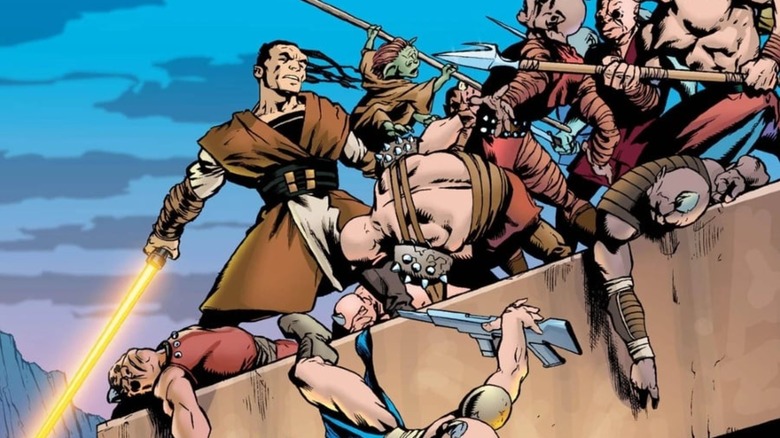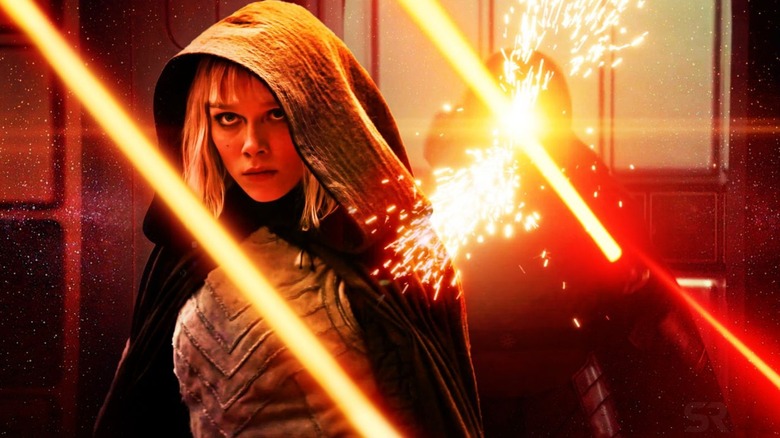Share this @internewscast.com
When George Lucas unveiled “Star Wars” in 1977, lightsabers came in only two colors: red and blue. Red was for the villains, while blue adorned the heroes’ weapons. This color scheme persisted until “Return of the Jedi,” where Luke Skywalker (played by Mark Hamill) debuted a green lightsaber after losing his original one, introducing a new hue to the franchise. As “Star Wars” evolved with its comics, books, and video games, more lightsaber colors appeared, each carrying its own symbolism.
In 2012, Disney’s acquisition of Lucasfilm marked a shift, turning much of the expanded universe into “Star Wars” Legends, while the core content became canon. This transition also brought changes to lightsaber colors and their meanings. While black is still the rarest saber color in “Star Wars,” orange remains elusive in both Legends and canon.
Only a few Force users are depicted with orange lightsabers in “Star Wars,” and audiences unfamiliar with Legends material might not have known about them until the debut of “Star Wars: Ahsoka” on Disney+. The series features two characters with orange-red lightsabers, as purposely chosen by showrunner Dave Filoni to mystify viewers about the characters Shin Hati (Ivanna Sakhno) and Baylan Skoll (Ray Stevenson) and their connections to the Force. Although lightsaber coloring can sometimes be illogical, their significance is generally straightforward.
The meaning of orange lightsabers in Legends
Prior to Disney’s “Star Wars” acquisition, orange lightsabers appeared in the hands of Jedi from the Prequel Trilogy era. Master Plo Koon was seen using an orange saber in the Stark Hyperspace War before the Clone Wars, and Master Yaddle also wielded one, though they later switched to blue and green in canon. Even Darth Bane used an orange saber, showing its usage wasn’t limited to Jedi alone.
The Jedi Polvin Kut, who lived two centuries before the Clone Wars, also carried an orange blade. He was Yaddle’s master, with both appearing in Dark Horse Comics’ “Star Wars” series. After Disney took over, these comics became part of the Legends lore, and while some aspects entered canon, the specific lightsaber colors did not.
In Legends, orange lightsabers were often linked to the concept of Gray Jedi, Force users who followed neither the light nor dark side of the Force. However, this concept doesn’t exist in current canon. Orange blades in Legends were also associated with the Sentinel class, protectors of the Jedi Temples, which have been replaced by yellow blades in the current canon.
Star Wars canon classifies lightsaber colors differently
The first canon appearance of orange lightsabers comes in the 2019 video game “Star Wars Jedi: Fallen Order,” where Cal Kestis wields one. There is no attributable meaning to it, and the game allows the player to change it to any color they prefer. The 2023 sequel, “Star Wars Jedi: Survivor,” continued this trend, while a more detailed introduction of lightsaber colors in canon arrived in 2024’s “Star Wars: The Acolyte,” which shows a rainbow of blades wielded by various Jedi.
Unfortunately, none were orange, despite making their live-action debut in “Star Wars: Ahsoka.” While there’s no clarification in that series’ narrative as to why the blades of Shin Hati and Baylan Skoll are orange-red, Dave Filoni’s explanation makes sense: He saw Darth Vader’s red blade as flickering somewhat towards orange, and wanted to bring that color out in the sabers of his two Force-wielding mercenaries. While they’re more orange than red, you can see red accents in the blade’s edge, producing a darker orange than those seen in Legends.
Despite Filoni’s remarks, there’s no depicted canon explanation for the lightsaber color’s meaning. This is somewhat true of all canon, as there’s no elucidation for why Mace Windu’s (Samuel L. Jackson) lightsaber is purple in the films (ultimately, it was because of the actor’s preference). Color explanations primarily come from supporting materials and sourcebooks that explain their meaning. For orange, the color represents a middle path, independence, and an ethical pragmatism.










